INSTITUT SUPERIEUR D'ANTHROPOLOGIE
INSTITUTE OF ANTHROPOLOGY
ONLINE COURSES / COURS A DISTANCE
SPRING TERM : APRIL 2014
REGISTER NOW
MEXIQUE – 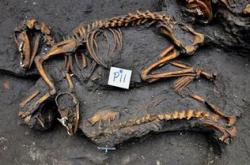 Mexico City - The remains of 12 dogs were buried together in a pit more than 500 years ago in what is now Mexico City, archaeologists said Friday. The dogs were buried in a single pit about 6-feet square. Rocio Sanchez Morales, with the National Institute of Anthropology and History, said the burial is unusual because dogs in that period were usually buried with humans or at building sites to serve as escorts to the underworld, as offerings or as guards. The dogs are believed to have been buried sometime between 1350 and 1520, when the Aztec Empire was at its height. The pit was excavated during salvage archaeology before new construction in the area. A biologist, Alicia Padilla White, examined the skeletal remains and said they appear to have been common dogs -- what might today be called mutts, Antonio Zamora, one of the archaeologists on the dig, said.
Mexico City - The remains of 12 dogs were buried together in a pit more than 500 years ago in what is now Mexico City, archaeologists said Friday. The dogs were buried in a single pit about 6-feet square. Rocio Sanchez Morales, with the National Institute of Anthropology and History, said the burial is unusual because dogs in that period were usually buried with humans or at building sites to serve as escorts to the underworld, as offerings or as guards. The dogs are believed to have been buried sometime between 1350 and 1520, when the Aztec Empire was at its height. The pit was excavated during salvage archaeology before new construction in the area. A biologist, Alicia Padilla White, examined the skeletal remains and said they appear to have been common dogs -- what might today be called mutts, Antonio Zamora, one of the archaeologists on the dig, said.
http://www.upi.com/Science_News/2014/02/14/12-Aztec-dogs-found-buried-in-common-grave-in-Mexico-City/UPI-40771392436768/
CUBA – 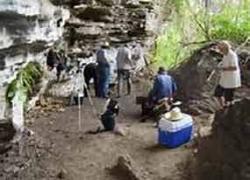 San Pedro - Cuban archeologists and investigators are working on the remains of old haciendas and cemeteries, most of them built during the 19th Century. In April, groups of experts will explore around the ruins of San Pedro, a coffee plantation, looking for a buring ground associated to the place, in the Cuban western province of Artemisa. Cuban geologist Henry Fernandez, one of the coordinators, said that if the first excavations are positive, they are trustful they will find the cemetery. In previous works, specialists from the Havana Archaeological Cabinet and from the local museum, discovered the foundations of the main house, part of the domestic instruments and vestiges of the industrial area. The excavations that started three years ago made possible to locate the house that was used as a dwelling by the owners in the 19th Century. Another revelation was the existance of a complex drainage system. Founded in 1804, San Pedro was surrounded by haciendas constructed mainly by French immigrants who came to Cuba after the Haitian Revolution (1791-1804). His owner, Pedro Leret, was born in Baltimore, US, and came to Cuba when he was very young.
San Pedro - Cuban archeologists and investigators are working on the remains of old haciendas and cemeteries, most of them built during the 19th Century. In April, groups of experts will explore around the ruins of San Pedro, a coffee plantation, looking for a buring ground associated to the place, in the Cuban western province of Artemisa. Cuban geologist Henry Fernandez, one of the coordinators, said that if the first excavations are positive, they are trustful they will find the cemetery. In previous works, specialists from the Havana Archaeological Cabinet and from the local museum, discovered the foundations of the main house, part of the domestic instruments and vestiges of the industrial area. The excavations that started three years ago made possible to locate the house that was used as a dwelling by the owners in the 19th Century. Another revelation was the existance of a complex drainage system. Founded in 1804, San Pedro was surrounded by haciendas constructed mainly by French immigrants who came to Cuba after the Haitian Revolution (1791-1804). His owner, Pedro Leret, was born in Baltimore, US, and came to Cuba when he was very young.
http://www.plenglish.com/index.php?option=com_content&task=view&id=2380461&Itemid=1
FRANCE – 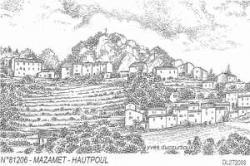 Hautpoul - C’est une réputée archéologue médiéviste, Marie Elise Gardel, qui est à l’origine de la découverte. Une récente campagne de prospection initiée par l’association de valorisation du patrimoine mazamétain et entreprise sur le site de Saint Sauveur à Hautpoul a révélé l’existence probable d’un «castrum» moyenâgeux. Le bilan des recherches effectuées sur place en 2012/2013 apporte les indices de la présence d’un lieu fortifié du plus grand intérêt. Une profusion de tessons et vestiges divers ont été mis à jour et l’enthousiasme est grand chez les spécialistes. L’aventure qui va se poursuivre avec une campagne de fouilles exploratoires a été rendue possible par un dispositif de mécénat.
Hautpoul - C’est une réputée archéologue médiéviste, Marie Elise Gardel, qui est à l’origine de la découverte. Une récente campagne de prospection initiée par l’association de valorisation du patrimoine mazamétain et entreprise sur le site de Saint Sauveur à Hautpoul a révélé l’existence probable d’un «castrum» moyenâgeux. Le bilan des recherches effectuées sur place en 2012/2013 apporte les indices de la présence d’un lieu fortifié du plus grand intérêt. Une profusion de tessons et vestiges divers ont été mis à jour et l’enthousiasme est grand chez les spécialistes. L’aventure qui va se poursuivre avec une campagne de fouilles exploratoires a été rendue possible par un dispositif de mécénat.
http://www.ladepeche.fr/article/2014/02/16/1819423-mazamet-hautpoul-une-decouverte-archeologique-grace-au-mecenat.html
MALI – 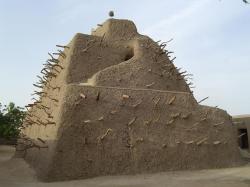 Gao - Some 90 per cent of the 11th century archaeological site of Gao Saneye in northern Mali was pillaged by Islamic extremists during their seizure of the region in 2012, traditional musical instruments and costumes were destroyed, and a World Heritage site mosque needs urgent repairs, United Nations cultural officials reported today. The report on the damage to cultural heritage in the town of Gao, addressing both sites and the cultural practices of local people, follows a UN assessment last year of Timbuktu, another major heritage site in northern Mali, which found that damage there was more extensive than first estimated, including the destruction of parts of the 15th century Djingareyber Mosque, one of three madrassas comprising the University of Timbuktu. The dramatic 17-metre-high pyramidal structure, built in 1495 by Askia Mohamed, Emperor of Songhai, which flourished in the 15th and 16th centuries through its control of trans-Sahara trade in salt and gold, is a fine example of the monumental mud-building traditions of the West African Sahel. The complex, including the pyramidal tomb, two flat-roofed mosque buildings, the mosque cemetery and the open-air assembly ground, was built when Gao became the capital of the Songhai Empire and after Askia Mohamed had returned from Mecca and made Islam the official religion of the empire.
Gao - Some 90 per cent of the 11th century archaeological site of Gao Saneye in northern Mali was pillaged by Islamic extremists during their seizure of the region in 2012, traditional musical instruments and costumes were destroyed, and a World Heritage site mosque needs urgent repairs, United Nations cultural officials reported today. The report on the damage to cultural heritage in the town of Gao, addressing both sites and the cultural practices of local people, follows a UN assessment last year of Timbuktu, another major heritage site in northern Mali, which found that damage there was more extensive than first estimated, including the destruction of parts of the 15th century Djingareyber Mosque, one of three madrassas comprising the University of Timbuktu. The dramatic 17-metre-high pyramidal structure, built in 1495 by Askia Mohamed, Emperor of Songhai, which flourished in the 15th and 16th centuries through its control of trans-Sahara trade in salt and gold, is a fine example of the monumental mud-building traditions of the West African Sahel. The complex, including the pyramidal tomb, two flat-roofed mosque buildings, the mosque cemetery and the open-air assembly ground, was built when Gao became the capital of the Songhai Empire and after Askia Mohamed had returned from Mecca and made Islam the official religion of the empire.
http://allafrica.com/stories/201402141155.html?
NORVEGE –  -By studying hand-written text fragments researchers chart the evolution of written language in Norway.The answers are often found in the details. Tiny objects contain the greatest discoveries. This series of close-ups show a selection of the research conducted at the University of Bergen.In this video Researcher Åslaug Ommundsen at the Department of Linguistic, Literary and Aesthetic Studies presents a close-up of medieval manuscripts.
-By studying hand-written text fragments researchers chart the evolution of written language in Norway.The answers are often found in the details. Tiny objects contain the greatest discoveries. This series of close-ups show a selection of the research conducted at the University of Bergen.In this video Researcher Åslaug Ommundsen at the Department of Linguistic, Literary and Aesthetic Studies presents a close-up of medieval manuscripts.
VIDEO = http://vimeo.com/66236206
SYRIE - 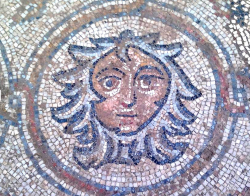
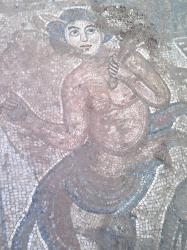
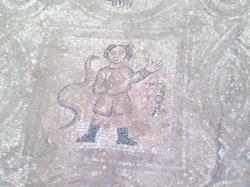 Raqqa - Islamic fundamentalists in Syria have started to destroy archaeological treasures such as Byzantine mosaics and Greek and Roman statues because their portrayal of human beings is contrary to their religious beliefs. The systematic destruction of antiquities may be the worst disaster to ancient monuments since the Taliban in Afghanistan dynamited the giant statues of Buddha at Bamiyan in 2001 for similar ideological reasons.In mid-January the Islamic State of Iraq and the Levant (Isis), an al-Qa’ida-type movement controlling much of north-east Syria, blew up and destroyed a sixth-century Byzantine mosaic near the city of Raqqa on the Euphrates.
Raqqa - Islamic fundamentalists in Syria have started to destroy archaeological treasures such as Byzantine mosaics and Greek and Roman statues because their portrayal of human beings is contrary to their religious beliefs. The systematic destruction of antiquities may be the worst disaster to ancient monuments since the Taliban in Afghanistan dynamited the giant statues of Buddha at Bamiyan in 2001 for similar ideological reasons.In mid-January the Islamic State of Iraq and the Levant (Isis), an al-Qa’ida-type movement controlling much of north-east Syria, blew up and destroyed a sixth-century Byzantine mosaic near the city of Raqqa on the Euphrates.
http://www.independent.co.uk/news/science/archaeology/news/the-destruction-of-the-idols-syrias-patrimony-at-risk-from-extremists-9122275.html